Ensuring the physical safety of anyone who visits the courthouse is a chief concern for court security.
- With the assistance of the high-profile team, evaluate the physical security both inside the courthouse and in the immediately surrounding area, and plan accordingly.
- Consider the building's physical plan and where in the building various actors (and media public, witnesses, attorneys) will go to ensure their safety.
- Consider whether additions or changes must be made to the courthouse and outside of the courthouse for appropriate physical security (e.g. metal detectors, barricades, barriers for queuing management).
- Review current emergency evacuation plans and make sure they will still be sufficient with the additional expected traffic to the court. Consider if other plans should be created for possible threats.
- Assess all security measures in place immediately surrounding the courthouse and determine whether temporary barriers to impede vehicle or foot traffic are necessary given the nature of the case.
- As necessary, develop a working relationship with law enforcement agencies and personnel who have jurisdiction over the exterior of the courthouse and the immediately surrounding areas. Communicate any concerns about security risks and request details about plans to address those concerns.
- Include airspace above and around the courthouse as part of the security assessment. Develop a plan for addressing potential security threats from drones.
- Determine whether it is necessary to sweep for bombs in the courtroom or the courthouse, and if so, the frequency for those sweeps.
- Estimated the number of media and public spectators that are likely to enter the courthouse to observe proceedings and secure a sufficient number of court security officers and devices (e.g., metal detectors, wands, x-ray machines) to expedite screening during times of especially high volume. If necessary, obtain stanchion posts and rope to delineate entrance queues.
- Immediately before and during court hearings, monitor social media for references to the high-profile case to learn about protests or other potential security risks.
- Consider the size and location of the courtroom. It should be large enough to accommodate the number of participants and security personnel, but not so large that it would be conducive to disruptions by spectators. If the trial judge’s regular courtroom will not be large enough or sufficiently secure, an alternate courtroom should be selected that meets the necessary requirements.
- Determine whether offices, courtrooms, or other rooms located on the floors directly above, below, and adjacent to the proposed courtroom present a security hazard.
- In a case involving very high security, consider whether buildings or other structures with windows facing the courtroom might pose a potential security threat.
- Assess the extent to adjacent courtroom security on the floor. If possible, seal off the corridor with barricades or barriers as a checkpoint to inspect access credentials for persons entering the courtroom. Ensure that security procedures do not unduly interfere with access to other courtrooms or offices in the immediate vicinity.
- Determine if credentialing (a badge or lanyard strategy) all individuals attending the trial, or if the media alone will be need to be. If so, determine what method of credentialing will be used. Issuing credentials is a common practice in high-profile trials that can help control access, increase security, limit access to specific areas, and insure that the media reports to the court in a timely fashion. This will involve working closely with the PIO.
- The initial decision that needs to be made is if passes will be issued, and if so, on a permanent or day-to-day basis? Permanent passes allow passes to be issued that will last the duration of the trial.
- Passes can also be organized to better assist with security, and different high-profile trials have had success with a variety of organizational methods for press passes. Issuing differential press passes allows the court to control who is permitted access to what facilities (example: granting access to the courtroom, press room, and courthouse compared to granting access only to the courthouse) and has been found to be an extremely useful technique in cases where court security is a particular concern. Another system involves color coding the passes (example: for press, family members, witnesses).
- Consider if changes will need to be made to the court's existing firearm policy, or if a firearm policy will need to be put in place.
- Ensure that everyone is screened as they enter the court. Screening everyone that enters the courthouse is a generally accepted practice and helps to ensure the safety of everyone within the court's facilities. Jurors, witnesses, the judge, attorneys, and parties should be searched/scanned in the same manner as any other visitor to the courthouse.
